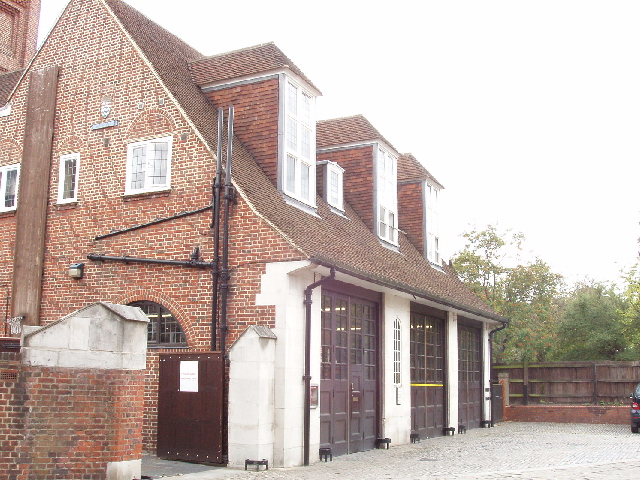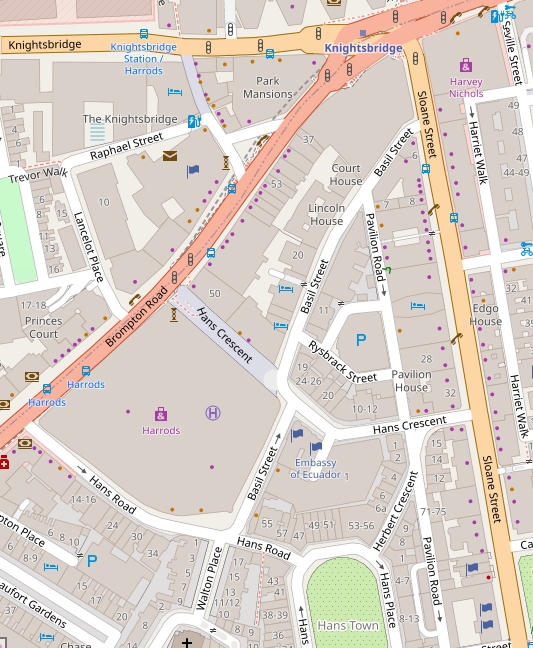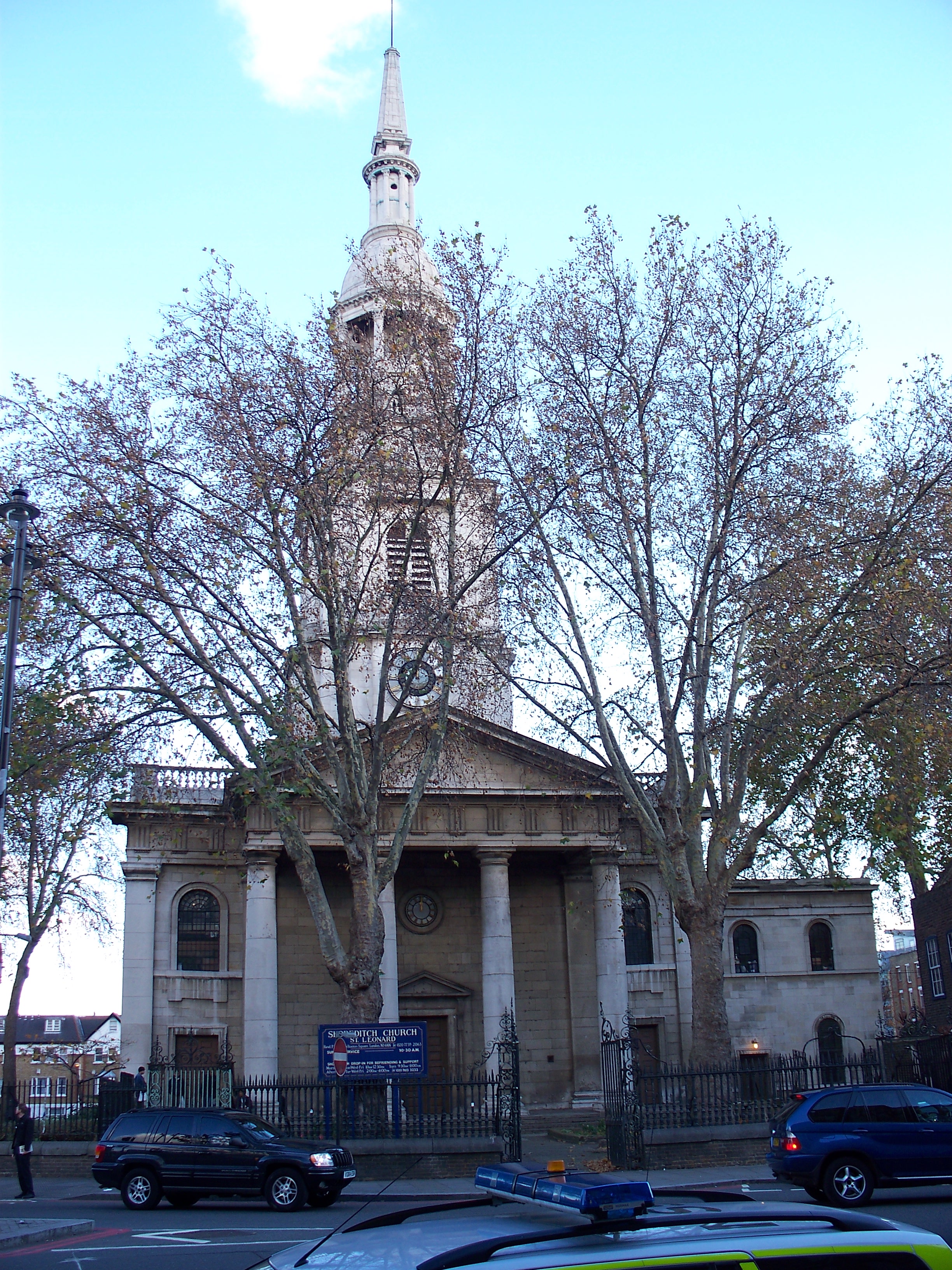|
Owen Fleming
Owen Fleming (1867-1955) was an architect based in London. He is noted for being the principal architect for London County Council (LCC), leading the New Housing of the Working Classes Department within the LCC between 1889 and 1907. He was the lead architect with Charles Winmill of 16 Basil Street, a purpose built fire station in Knightsbridge. Fleming was also responsible for over seeing the Boundary Gardens Scheme, which set a precedent for future council estates. They designed decorative flats that were not simply regimented, with varying size of windows, small doors and roofs with attractive gables. "The Eastender deserves better that that", wrote Fleming referring to the average build in Shoreditch Shoreditch is a district in the East End of London in England, and forms the southern part of the London Borough of Hackney. Neighbouring parts of Tower Hamlets are also perceived as part of the area. In the 16th century, Shoreditch was an impor .... References {{DEFAU ... [...More Info...] [...Related Items...] OR: [Wikipedia] [Google] [Baidu] |
Architect
An architect is a person who plans, designs and oversees the construction of buildings. To practice architecture means to provide services in connection with the design of buildings and the space within the site surrounding the buildings that have human occupancy or use as their principal purpose. Etymologically, the term architect derives from the Latin ''architectus'', which derives from the Greek (''arkhi-'', chief + ''tekton'', builder), i.e., chief builder. The professional requirements for architects vary from place to place. An architect's decisions affect public safety, and thus the architect must undergo specialized training consisting of advanced education and a ''practicum'' (or internship) for practical experience to earn a Occupational licensing, license to practice architecture. Practical, technical, and academic requirements for becoming an architect vary by jurisdiction, though the formal study of architecture in academic institutions has played a pivotal role in ... [...More Info...] [...Related Items...] OR: [Wikipedia] [Google] [Baidu] |
London
London is the capital and largest city of England and the United Kingdom, with a population of just under 9 million. It stands on the River Thames in south-east England at the head of a estuary down to the North Sea, and has been a major settlement for two millennia. The City of London, its ancient core and financial centre, was founded by the Romans as '' Londinium'' and retains its medieval boundaries.See also: Independent city § National capitals The City of Westminster, to the west of the City of London, has for centuries hosted the national government and parliament. Since the 19th century, the name "London" has also referred to the metropolis around this core, historically split between the counties of Middlesex, Essex, Surrey, Kent, and Hertfordshire, which largely comprises Greater London, governed by the Greater London Authority.The Greater London Authority consists of the Mayor of London and the London Assembly. The London Mayor is distinguished fr ... [...More Info...] [...Related Items...] OR: [Wikipedia] [Google] [Baidu] |
London County Council
London County Council (LCC) was the principal local government body for the County of London throughout its existence from 1889 to 1965, and the first London-wide general municipal authority to be directly elected. It covered the area today known as Inner London and was replaced by the Greater London Council. The LCC was the largest, most significant and most ambitious English municipal authority of its day. History By the 19th century, the City of London Corporation covered only a small fraction of metropolitan London. From 1855, the Metropolitan Board of Works (MBW) had certain powers across the metropolis, but it was appointed rather than elected. Many powers remained in the hands of traditional bodies such as parishes and the counties of Middlesex, Surrey and Kent. The creation of the LCC in 1889, as part of the Local Government Act 1888, was forced by a succession of scandals involving the MBW, and was also prompted by a general desire to create a competent government fo ... [...More Info...] [...Related Items...] OR: [Wikipedia] [Google] [Baidu] |
Charles Winmill
Charles Canning Winmill FRIBA (14 January 1865 – 11 January 1945) was an English architect working in the Arts and Crafts style during the late 19th and early 20th centuries. He spent much of his career in the London County Council's architects' department, before retiring early to focus on private work. He was a long-term active member of the Society for the Protection of Ancient Buildings, from 1898 onwards. He joined the Art Workers' Guild in 1917, served on the committee from 1927 to 1929, and helped to organise meetings and trips. He became a Fellow of the Royal Institute of British Architects in the late 1920s. Early life and education Charles Winmill was born at his parents' home in Balaam Street, Plaistow, East London, on 14 January 1865. His father was William Hill Winmill of West Ham, and his mother was Fanny Sarah (née Mumford) of Henham, Essex (they were married at St Mary's Church, Plaistow, on 7 November 1863). A second son, Hallett, was born in 1867, and th ... [...More Info...] [...Related Items...] OR: [Wikipedia] [Google] [Baidu] |
16 Basil Street
Basil Street, originally known as North Street, is a street in London's Knightsbridge. It was laid out in the second half of the eighteenth century on land belonging to Lord Cadogan and runs between Sloane Street in the north and the junction of Walton Place and Hans Road in the south. It is joined on its east side by Pavilion Road and Rysbrack Street and crossed by Hans Crescent. Architecturally, it is notable for the design of its blocks of mansion flats. Fashion designer Charles Creed had his premises there after the war and in the 1960s, the first meetings that led to ''Monty Python's Flying Circus'' were held at a flat in the street. History Basil Street was laid out in the second half of the eighteenth century on land belonging to Lord Cadogan when it was named North Street. It was well developed by the time of Richard Horwood's map of 1794. [...More Info...] [...Related Items...] OR: [Wikipedia] [Google] [Baidu] |
Boundary Estate
The Boundary Estate is a housing development in the London Borough of Tower Hamlets, in the East End of London. It is positioned just inside Bethnal Green's historic parish and borough boundary with Shoreditch, which ran along ''Boundary Street'', on the western edge of the estate. In 1965 Bethnal Green merged into the new London Borough of Tower Hamlets, while Shoreditch merged into the new London Borough of Hackney. ''Boundary Street'' continued to form the boundary between the two new local authorities.. The estate, constructed from 1890, was one of the earliest social housing schemes built by a local government authority. It was built on the site of the demolished ''Friars Mount'' rookery in the Old Nichol, with works begun by the Metropolitan Board of Works in 1893 and completed by the recently formed London County Council. Soil from the foundations was used to construct a mound in the middle of Arnold Circus at the centre of the development, surmounted by an extant ban ... [...More Info...] [...Related Items...] OR: [Wikipedia] [Google] [Baidu] |
Estate (land)
An estate is a large parcel of land under single ownership, which would historically generate income for its owner. British context In the UK, historically an estate comprises the houses, outbuildings, supporting farmland, and woods that surround the gardens and grounds of a very large property, such as a country house, mansion, palace or castle. It is the modern term for a manor, but lacks a manor's now-abolished jurisdiction. The "estate" formed an economic system where the profits from its produce and rents (of housing or agricultural land) sustained the main household, formerly known as the manor house. Thus, "the estate" may refer to all other cottages and villages in the same ownership as the mansion itself, covering more than one former manor. Examples of such great estates are Woburn Abbey in Bedfordshire, England, and Blenheim Palace, in Oxfordshire, England, built to replace the former manor house of Woodstock. In a more urban context are the "Great Estates" in ... [...More Info...] [...Related Items...] OR: [Wikipedia] [Google] [Baidu] |
Shoreditch
Shoreditch is a district in the East End of London in England, and forms the southern part of the London Borough of Hackney. Neighbouring parts of Tower Hamlets are also perceived as part of the area. In the 16th century, Shoreditch was an important centre of the Elizabethan Theatre, and it has been an important entertainment centre since that time. Today, it hosts many pubs, bars and nightclubs. The most commercial areas lie closest to the city of London and along the A10 Road, with the rest mostly residential. Toponymy Early spellings of the name include ''Soredich'' (c.1148), ''Soresdic'' (1183–4), ''Sordig'' (1204), ''Schoresdich'' (1220–21), and other variants. Toponymists are generally agreed that the name derives from Old English "''scoradīc''", i.e. "shore-ditch", the shore being a riverbank or prominent slope; but there is disagreement as to the identity of the "shore" in question. A suggestion made by Eilert Ekwall in 1936 that the "ditch" might have been one leadi ... [...More Info...] [...Related Items...] OR: [Wikipedia] [Google] [Baidu] |
1867 Births
Events January–March * January 1 – The Covington–Cincinnati Suspension Bridge opens between Cincinnati, Ohio, and Covington, Kentucky, in the United States, becoming the longest single-span bridge in the world. It was renamed after its designer, John A. Roebling, in 1983. * January 8 – African-American men are granted the right to vote in the District of Columbia. * January 11 – Benito Juárez becomes Mexican president again. * January 30 – Emperor Kōmei of Japan dies suddenly, age 36, leaving his 14-year-old son to succeed as Emperor Meiji. * January 31 – Maronite nationalist leader Youssef Bey Karam leaves Lebanon aboard a French ship for Algeria. * February 3 – ''Shōgun'' Tokugawa Yoshinobu abdicates, and the late Emperor Kōmei's son, Prince Mutsuhito, becomes Emperor Meiji of Japan in a brief ceremony in Kyoto, ending the Late Tokugawa shogunate. * February 7 – West Virginia University is established in Morgantown, West Virginia. * Febru ... [...More Info...] [...Related Items...] OR: [Wikipedia] [Google] [Baidu] |
1955 Deaths
Events January * January 3 – José Ramón Guizado becomes president of Panama. * January 17 – , the first nuclear-powered submarine, puts to sea for the first time, from Groton, Connecticut. * January 18– 20 – Battle of Yijiangshan Islands: The Chinese Communist People's Liberation Army seizes the islands from the Republic of China (Taiwan). * January 22 – In the United States, The Pentagon announces a plan to develop intercontinental ballistic missiles (ICBMs), armed with nuclear weapons. * January 23 – The Sutton Coldfield rail crash kills 17, near Birmingham, England. * January 25 – The Presidium of the Supreme Soviet of the Soviet Union announces the end of the war between the USSR and Germany, which began during World War II in 1941. * January 28 – The United States Congress authorizes President Dwight D. Eisenhower to use force to protect Formosa from the People's Republic of China. February * February 10 – The United States Seventh Flee ... [...More Info...] [...Related Items...] OR: [Wikipedia] [Google] [Baidu] |
19th-century English Architects
The 19th (nineteenth) century began on 1 January 1801 ( MDCCCI), and ended on 31 December 1900 ( MCM). The 19th century was the ninth century of the 2nd millennium. The 19th century was characterized by vast social upheaval. Slavery was abolished in much of Europe and the Americas. The First Industrial Revolution, though it began in the late 18th century, expanding beyond its British homeland for the first time during this century, particularly remaking the economies and societies of the Low Countries, the Rhineland, Northern Italy, and the Northeastern United States. A few decades later, the Second Industrial Revolution led to ever more massive urbanization and much higher levels of productivity, profit, and prosperity, a pattern that continued into the 20th century. The Islamic gunpowder empires fell into decline and European imperialism brought much of South Asia, Southeast Asia, and almost all of Africa under colonial rule. It was also marked by the collapse of the large S ... [...More Info...] [...Related Items...] OR: [Wikipedia] [Google] [Baidu] |







